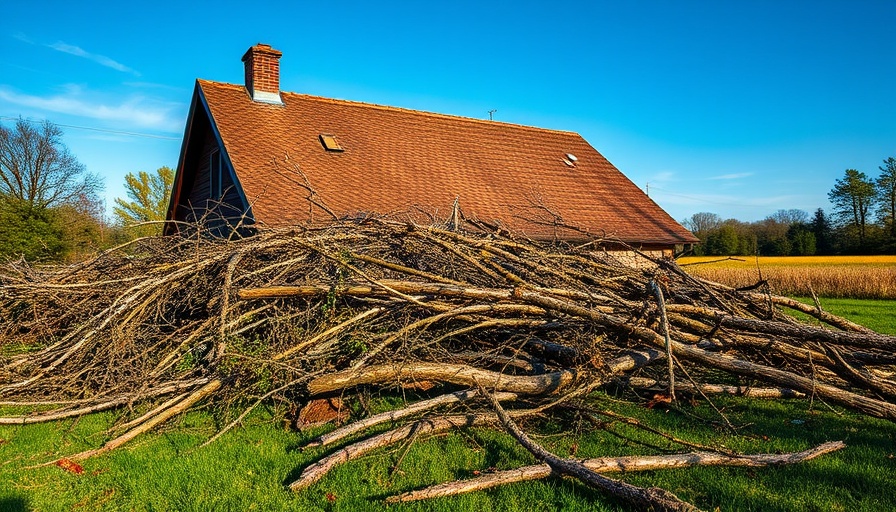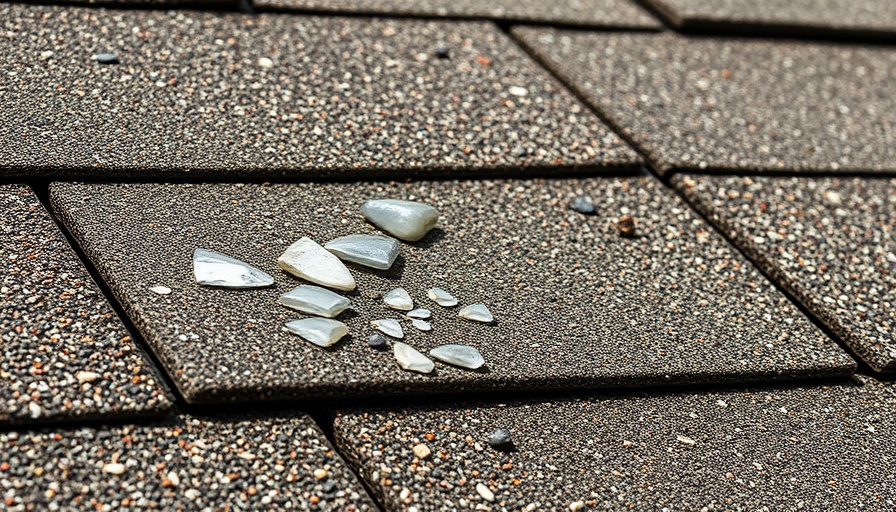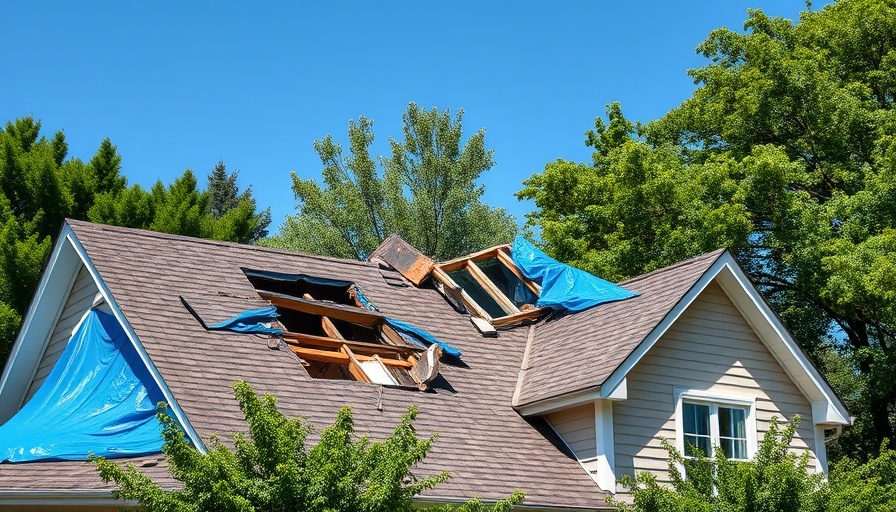
Protecting Your Home After a Hailstorm: A Key Four-Point Checklist
As hailstorms become more frequent in regions like the Twin Cities and Western Wisconsin, homeowners are left grappling with the aftermath of these devastating weather events. The sound of hail wreaking havoc on roofs, siding, and gutters has become an unsettling norm. However, understanding the essential steps to take after such damage can significantly ease the restoration process. The four-point post-hailstorm checklist not only aids in recovery but also empowers homeowners to address issues proactively.
Step 1: Create a Comprehensive Storm Damage File
The first action every homeowner should take is to start a storm damage file. Document the exact date of the storm, the extent of the visible damage, and pay attention to often-overlooked areas such as air conditioning units, fences, and outdoor structures. Homeowners can enhance their reports by capturing the size of hailstones and photographing them alongside a common object for scale, such as a quarter. A ground-level inspection using binoculars can also reveal damages on rooftops that are not easily visible to the naked eye. Signs such as a significant amount of shingle granules collected in gutters or missing shingles indicate that your roof has suffered damage.
Step 2: Assess and Triage Damaged Areas
Hail damage can lead to serious complications, particularly leaks originating from the roof. It's crucial to act quickly and mitigate further damage. Placing tarp over severely affected areas may prevent rain from entering your home and causing additional destruction. Likewise, if hail has shattered window glass, boarding up those openings is essential until replacements can be arranged. Acting promptly to secure your home safeguards your property and significantly eases future repair processes.
Step 3: Engage with a Trustworthy Local Contractor
The importance of hiring a reputable local contractor cannot be overstated during the restoration process. Experienced contractors are equipped to conduct thorough inspections, pinpointing hail damage that an average homeowner might overlook. A trustworthy contractor not only provides documentation vital for insurance claims but also collaborates with insurance adjusters to ensure you receive appropriate compensation. Homeowners should remain vigilant against storm-chasing contractors—often unlicensed and uninsured—who may capitalize on the anxiety that follows a storm.
Step 4: Navigate Your Insurance Claims with Expertise
Before any restoration work begins, it’s crucial to file a claim for hail damage insurance. A reputable contractor can be instrumental in this process, particularly if the insurance company’s initial offer does not adequately reflect the damage incurred or fails to take into account upgrades to your property. Homeowners have options for appealing unfavorable estimates, including retaining an independent adjuster or even filing disputes with relevant authorities if necessary.
Emotional and Human Interest Angles: Why This Information Matters
For many homeowners, experiencing hail damage goes beyond mere property repair; it can be an emotionally taxing ordeal. The steps outlined in this checklist pertain to both immediate action and strategic planning for recovery. Knowing how to respond effectively can provide peace of mind and significantly reduce stress levels during an already chaotic time. Faces filled with worry about upcoming bills and damage can start to feel empowered as they navigate through this checklist, ultimately controlling their pathway to recovery.
Comparative Insights: Local vs. Global Perspectives on Storm Damage
While hailstorms may seem localized, they contribute to a growing narrative around climate change's impact on severe weather events. Communities across the globe are increasingly dealing with the repercussions of extreme weather, requiring residents not only to invest in restoration strategies but also to advocate for environmental changes that might lessen future storm impact. Understanding the broader implications can amplify the importance of this checklist, making it more than just a guide for local homeowners.
Future Trends in Home Repair After Severe Weather
As technology evolves, the future of storm damage assessment may well incorporate more advanced solutions, such as drones for roof inspections and AI algorithms to predict potential vulnerabilities in homes. This shift towards tech-driven assessments could revolutionize how homeowners approach storm preparedness and repair, leading them to become more proactive rather than reactive in their strategies.
Conclusion: Take Action Now to Secure Your Home
Understanding what to do post-hailstorm is critical for any homeowner. The four-point checklist lays a foundation for effective action, ensuring you address damage swiftly and accurately. Whether you’re a seasoned homeowner or navigating storm challenges for the first time, having this knowledge at your fingertips instills confidence and control when it matters most. Start organizing your storm damage file today, and don't hesitate to reach out to a trusted local contractor for their expertise. Proactive steps taken now could save time, money, and stress in the future!
 Add Row
Add Row  Add
Add 




Write A Comment